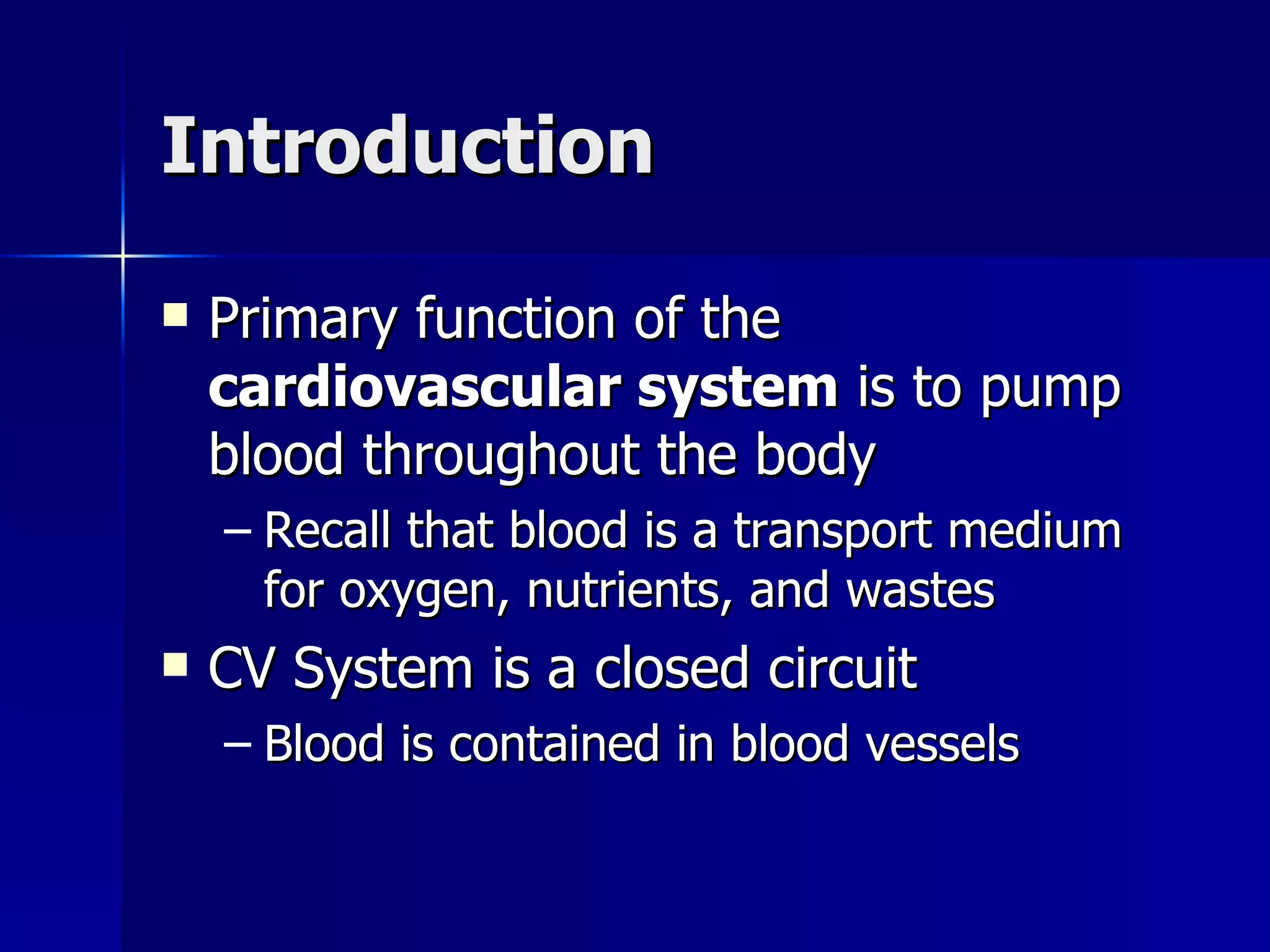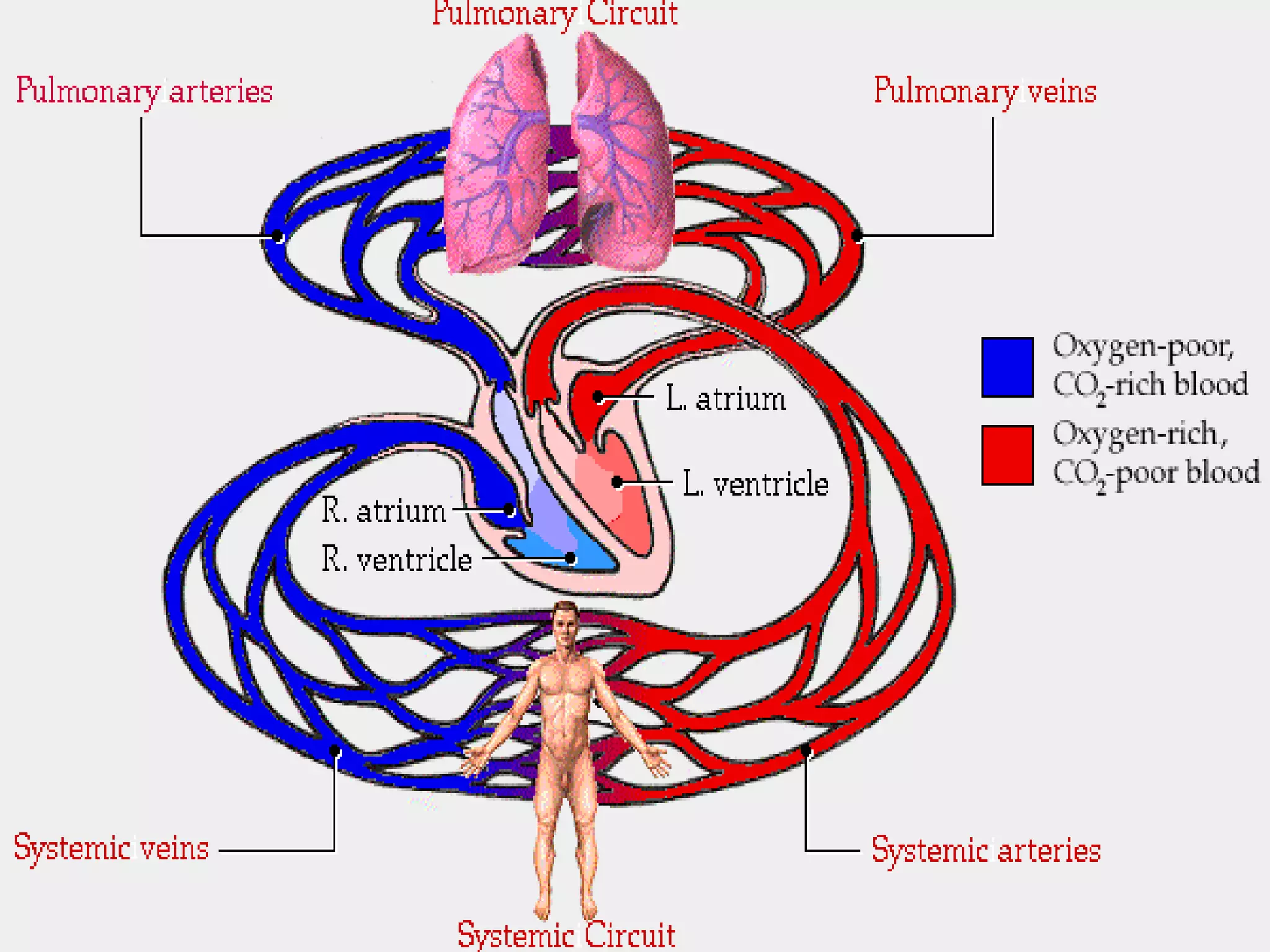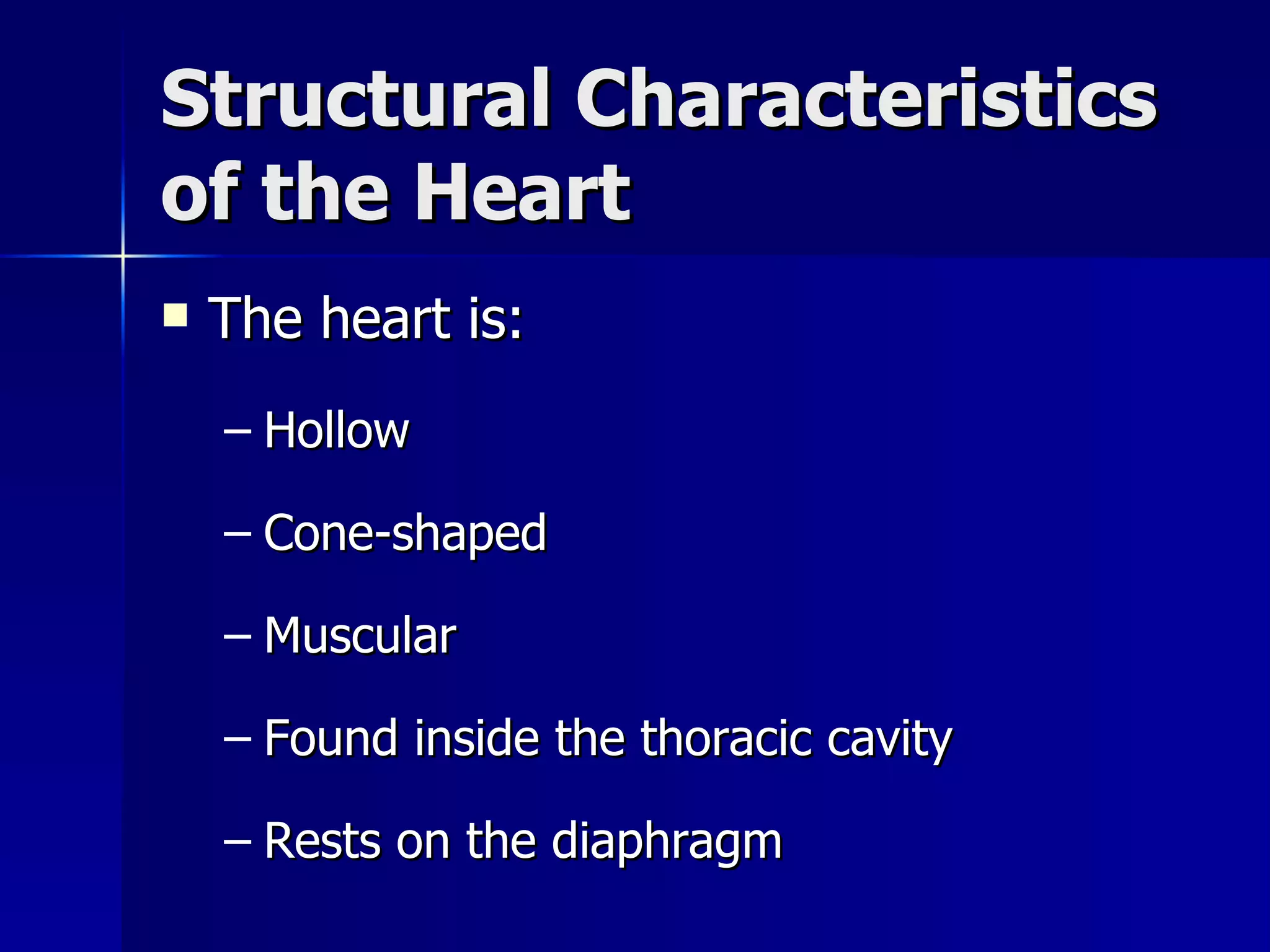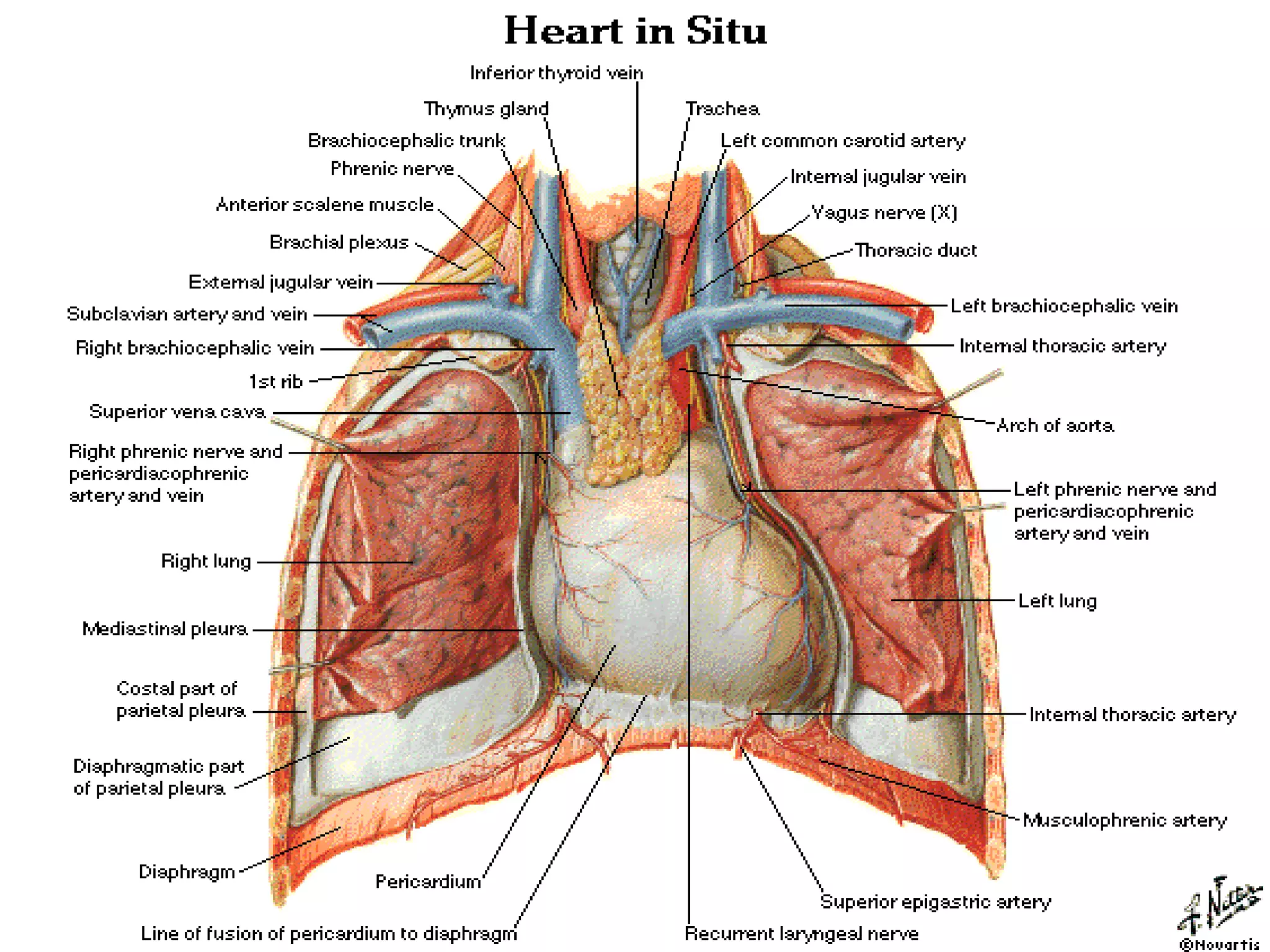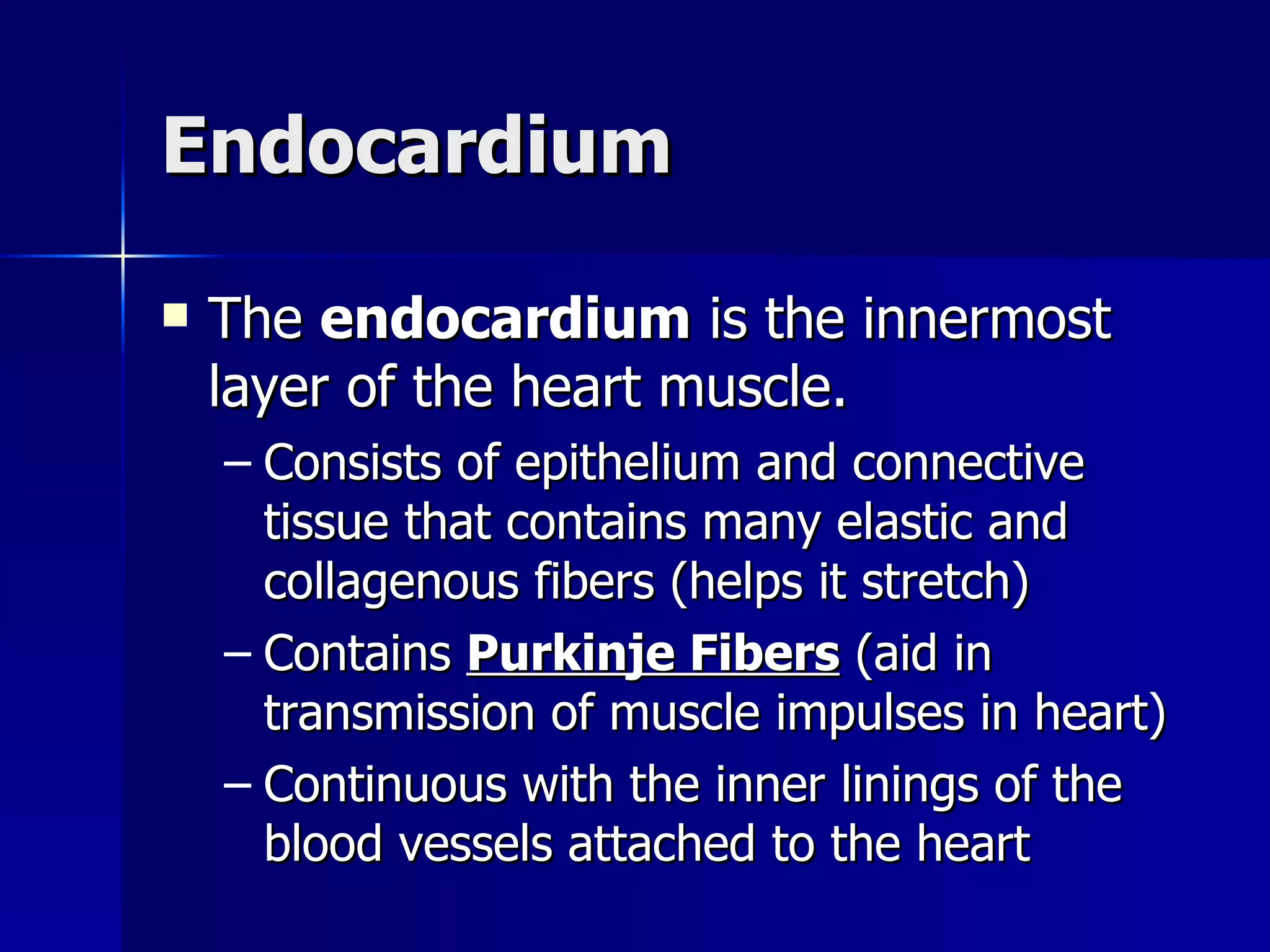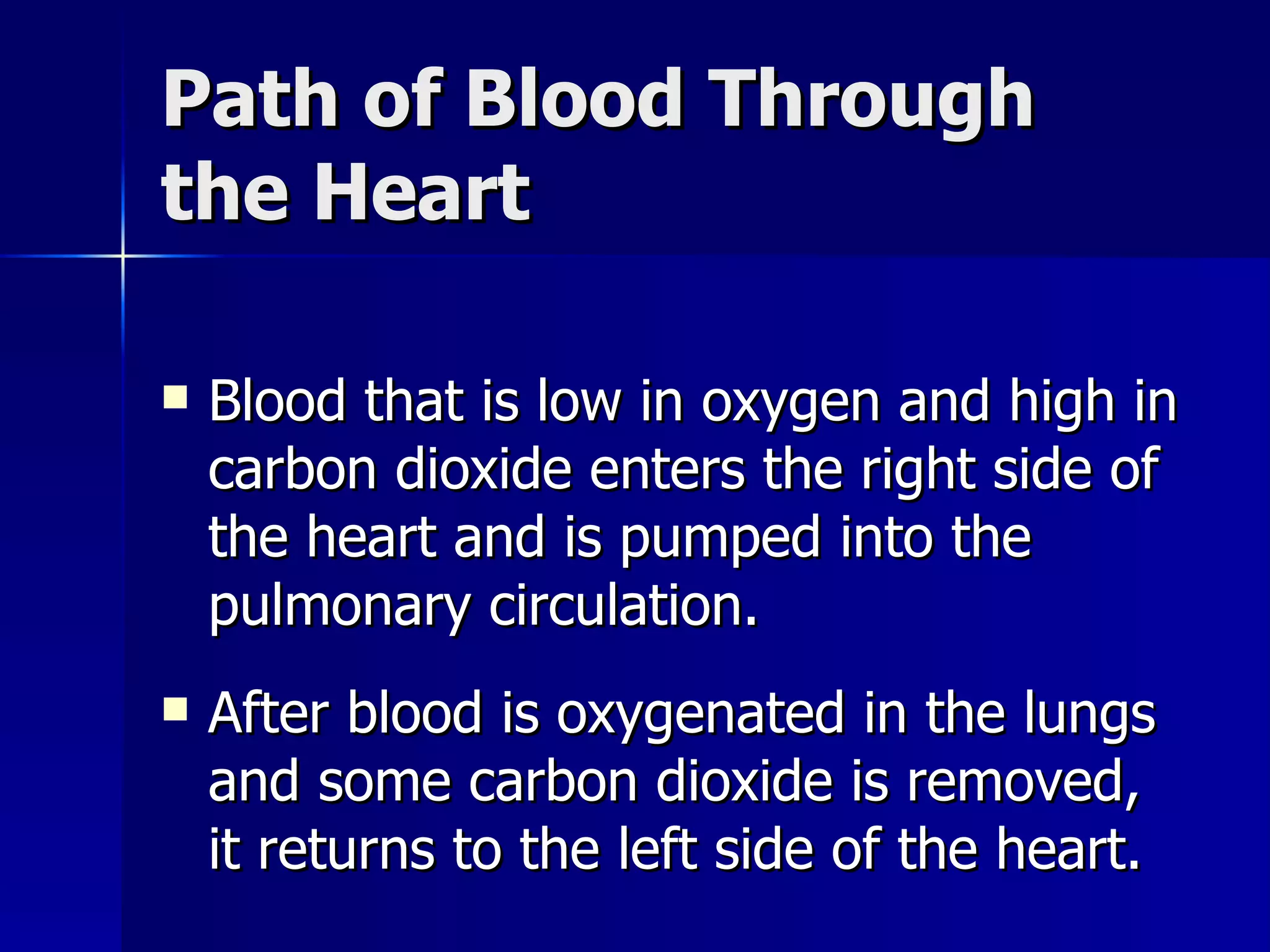The cardiovascular system transports blood throughout the body using a two-circuit pathway. The pulmonary circuit pumps deoxygenated blood to the lungs for oxygenation and returns it to the left side of the heart. The systemic circuit then pumps oxygenated blood from the left side of the heart through arteries to tissues throughout the body to deliver oxygen and nutrients. The heart is divided into four chambers and uses valves to ensure one-way blood flow and prevent backflow between chambers.

